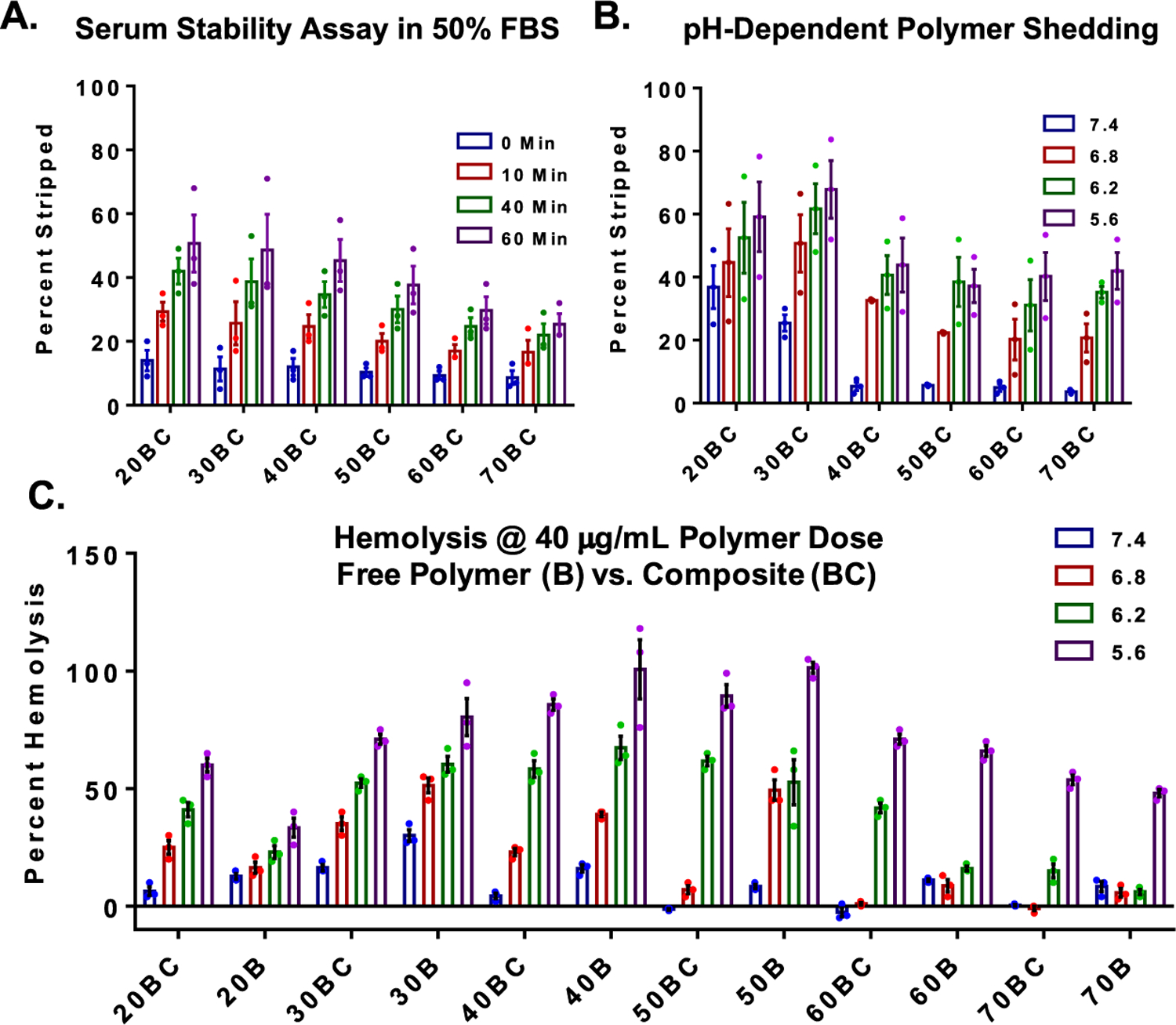Figure 4.

Serum stability of polymer coatings, pH-dependent polymer shedding, and membrane-disruptive behavior of nanocomposites. (A) Serum stability measurements of polymer coating in infinite sink conditions show a trend toward increasing stability with increasing hydrophobicity (% B). Significance was determined by two-way analysis of variance (ANOVA) (composition, p = 0.158; time, p < 0.0001; interaction, p = 0.0055) and post-hoc analysis using Tukey’s multiple comparison test (refer to Table S1). (B) pH-dependent polymer release from PSNPs. Significance was determined by two-way ANOVA (composition, p < 0.0015; pH, p < 0.0001; interaction, p = 0.9379) and post-hoc analysis using Tukey’s multiple comparison test (refer to Table S2). (C) pH-dependent red blood cell membrane disruption assay was used as an indicator for early endosome disruptive activity (hemolysis at pH 6.8 and below) and lack of hemotoxicity (no hemolysis at pH 7.4). The nanocomposites (labeled as BC) were compared to the polymers alone (labeled as B). Significance was determined by two-way ANOVA (composition, p < 0.0001; pH, p < 0.0001; interaction, p < 0.0001) and post-hoc analysis using Tukey’s multiple comparison (refer to Table S3). All experiments were n = 3, where individual points equal the average of technical replicates within independent experiments.
